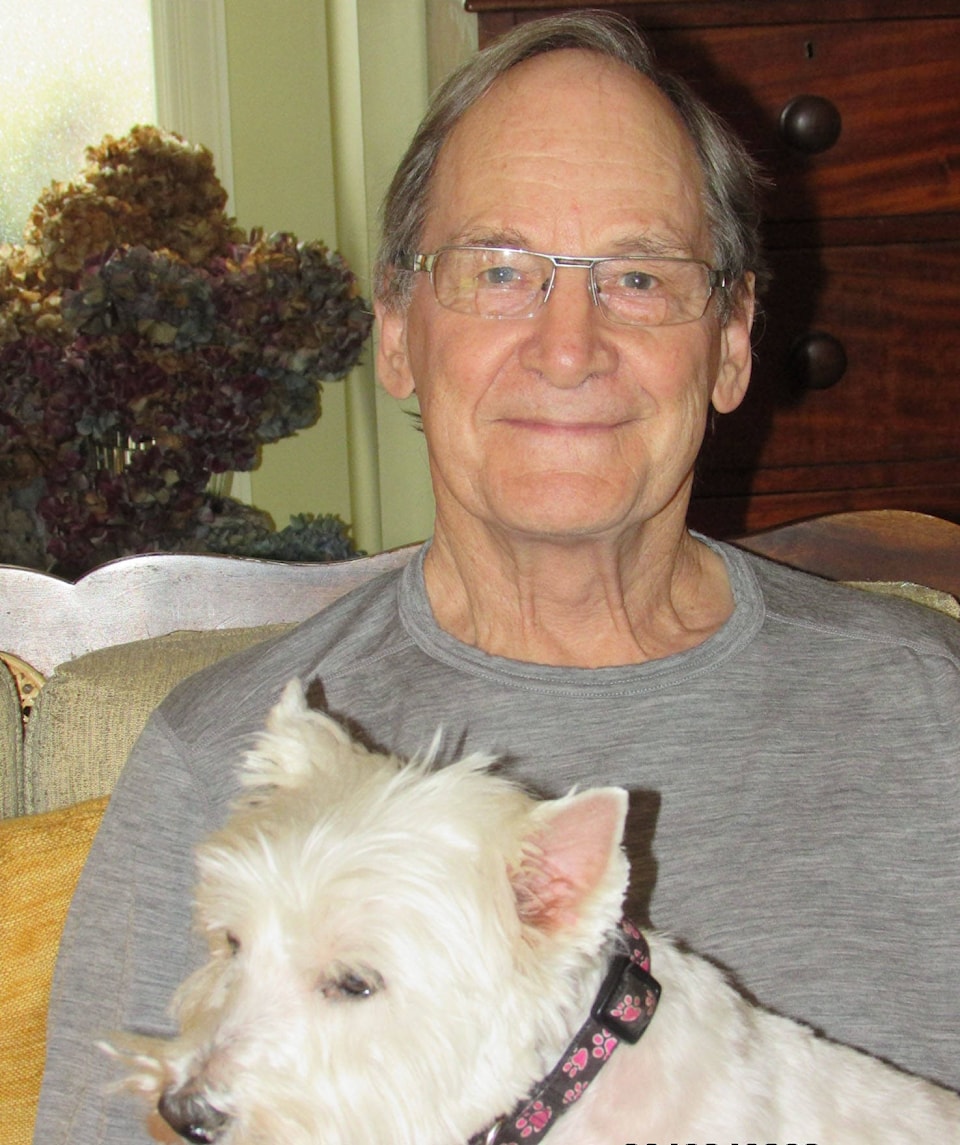BY NIGEL HANNAFORD
Special to the News
Doctor Hugo Lambrechts, a much-loved Port Alberni veterinarian, passed away at home late in October after a lengthy illness. He was 80.
Himself the son of a veterinarian, ‘Dr. Hugo’ was well known for 25 years in the mid-Island as the owner of Manzini Animal Hospital in Port Alberni. Less known were his adventures as a young man in the South African bush, where he discovered that “nature red in tooth and claw,” was not just a poetic expression.
As he would tell it, his first lucky escape was also his narrowest.
While still in school, it was customary during the summer holidays for him to join his father in the Bushveld, where the elder Dr. Lambrechts struggled every year along the Limpopo River to contain the spread of foot-and-mouth disease from neighbouring Mozambique.
Turned loose one day with a .22 rifle to make himself useful by shooting pests along the river, the young Hugo became distracted by the activities of monkeys overhead and failed to notice an approaching crocodile. Only when it came within two metres did he apprehend his peril.
“I just had a sense something was wrong,” he recalled years later.
Crocodiles can move quickly for short bursts and their tough skins will easily deflect a .22 bullet.
Nevertheless, shooting reflexively from the hip he hit the croc which, apparently stunned, backed away. So did Hugo, along with the dog that had been supplied for his protection by the farmer where he and his father were staying, with the advice: “If you run into a cheetah, it’ll go for the dog. Let it. You just get out of there.”
It was that kind of a childhood.
More encounters with dangerous game followed when years later, a freshly graduated Dr. Lambrechts the Younger joined his father in the government veterinary service.
Prominently displayed in the Lambrechts home for many years were the mounted horns of what many hunters consider the most dangerous animal to be found in southern Africa, a Cape Buffalo.
In a personal memoir, Dr. Hugo related how this animal had attacked one of his workers.
“I found this buffalo in the Mopani veld, and took two shots at about 100 yards. Unfortunately, I was using inferior ammunition, the proper load being the subject of US sanctions against the old South African government. However, my shots were well-placed and this beast should have gone down. But, he didn’t. I started to follow the blood spoor. It led into an opening between two thickets of Mopani shrub, and as I approached, again I got a very strong feeling of premonition. I had been warned that wounded buffalo would ambush hunters, so I turned back, got the Land Rover and came back to the spot. Evidently the Land Rover chased it away. When we examined the area, we found by the blood spoor that the buffalo had gone through the opening and then circled back and stood to one side in the thicket, waiting for me. Had I gone another 10 yards before I had turned back, he would have killed me.”
After an anxious night with a wounded animal on the loose, Dr. Hugo dispatched the bull the next day.
In this and many other moments as dangerous, Hugo Lambrechts credited that inner voice–a sixth sense–for his survival.
Through all this however, it was his close experience of nature in the South African bush that instilled in him his love of animals and the outdoors everywhere. And after coming to Canada, he became as familiar with the wildlife of North America, as he was of South Africa.
Hugo Barnard Lambrechts was born in Umtata, in the Republic of South Africa, the eldest son of Martinus Christoffel and Joan (Booker) Lambrechts. In 1963, he graduated with honours from the University of Pretoria’s veterinary faculty at Onderstepoort, and joined the government’s veterinary service.
In 1964, during a posting to the Northern Transvaal, he met and married Tershia Meyer. As a young married couple, they shared together the inconveniences and satisfactions of camp life until starting their family, setting up home eventually in Louis Trichardt.
They arrived in Port Alberni in 1974, having moved to Canada 14 months earlier.
In 1978, Dr. Lambrechts established the Manzini Animal Hospital. Fluent in Zulu, he chose the name Manzini with Port Alberni in mind: In the Zulu language, it means ‘a place of many waters.’
His was a popular practice: Dr. Lambrechts was widely celebrated for his ability to calm the most frightened and hostile animals. (And, if the news was not good, that same compassion extended to their distressed owners.)
He said near the end of his life that, “When wounds are handled gently, they heal more quickly.”
What he believed of veterinary science, he applied to life in general.
He had many friends.
He is survived by his wife Tershia, sons William and Hugo Jr. (Alison) of Jefferson, Georgia, brother Marthin Lambrechts and (Cathy) of Victoria, B.C. and grandchildren Sophia and Taylor.
He was predeceased by a daughter, Tracy.
